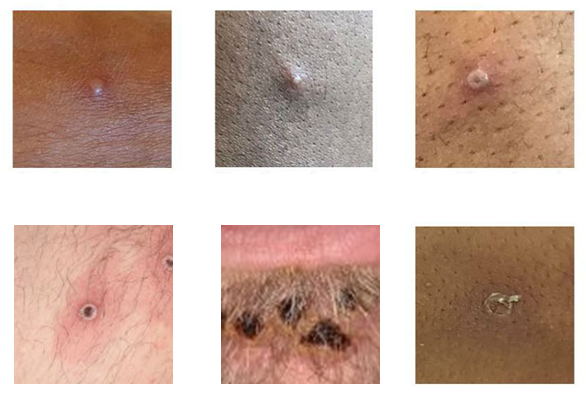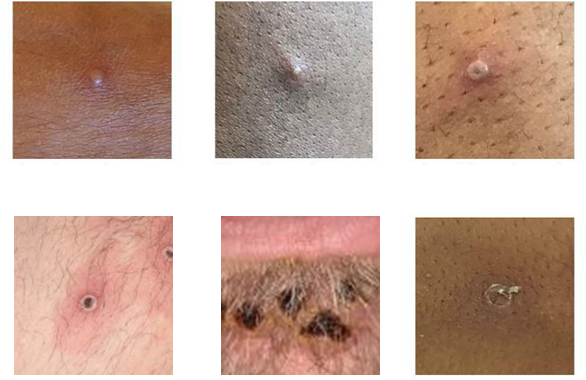
The US has now identified 45 cases of monkeypox across 15 states and the District of Columbia, while the multinational outbreak has reached more than 1,300 confirmed cases from at least 31 countries. No deaths have been reported.
In a news conference on Friday, US health officials gave updates on efforts to halt the spread of the virus and allay unfounded concerns that the virus is spreading through the air.
To date, no cases of airborne transmission have been reported in the outbreak, which has spread almost entirely through the sexual networks of men who have sex with men. Monkeypox can spread through large, short respiratory droplets, and healthcare providers are encouraged to use masking and other precautions during specific procedures, such as intubation. But the overall potential for long-range dispersion via smaller aerosols is more speculative and theoretical.
“Monkeypox is not believed to linger in the air and is not usually transmitted during short periods of shared airspace,” Rochelle Walensky, director of the Centers for Disease Control and Prevention, said in the briefing. There’s no evidence it spreads by having a casual conversation, passing someone in a store or touching the same item, such as a doorknob, she noted.
Officials see the current outbreak spreading through “close, sustained physical contact,” she added. “This is consistent with what we’ve seen in previous outbreaks and what we know from decades of studying this virus and closely related viruses.”
The CDC is still collecting clinical data on some of the country’s 45 cases, but of those with data, all involve direct physical contact, such as sex, CDC officials said. Most are linked to international travel.
“Everyone reports some kind of close contact that can be associated with direct, skin-to-skin contact,” Jennifer McQuiston, deputy director of CDC’s Division of High Consequence Pathogens and Pathology, said in the briefing. “It is often difficult to distinguish what a face-to-face [respiratory] droplet transfer may resemble direct skin-to-skin contact, as people are very intimate and close to each other. But all of our patients have reported direct skin-to-skin contact.”
Officials were eager to clarify the points after The New York Times ran a controversial story earlier this week highlighting the potential for airborne transmission while drawing comparisons to communications breakdowns earlier in the COVID-19 pandemic. virologists and health experts have already noted that the evidence of airborne transmission for monkeypox is: thin at its best-and clearly not the primary mode of shipment. The article can also increase stigma around the infectionsaid some, which health authorities have tried hard to avoid.
real concerns
In addition, as Walensky noted, experts have decades of experience with monkeypox, unlike the novel coronavirus, which public health officials and virologists rushed to understand amid the spreading pandemic. The virus was first identified in monkeys in 1958 and the first case in humans was seen in 1970. There have been periodic outbreaks in Central and West Africa, where the virus is endemic and affects animals. For example, excluding the multinational outbreak, there are more than 1,400 confirmed and suspected cases in endemic countries this year, including 66 deaths.
While airborne transmission is not a major concern, health officials are rushing to contain the current outbreak and are urging people to take it seriously. Earlier this week, the World Health Organization called on countries to “make every effort to identify all cases and contacts to bring this outbreak under control and prevent further spread”.
“The risk of monkeypox establishing itself in non-endemic countries is real,” said WHO Director-General Tedros Adhanom Ghebreyesus.
While the outbreak still largely affects men and especially men who have sex with men, the virus can spread to and infect anyone. A small number of cases have already been identified in women. “WHO is particularly concerned about the risks this virus poses to vulnerable groups, including children and pregnant women,” Tedros said.
In Friday’s briefing, Walensky and other federal health officials highlighted some of their work to contain the outbreak. That starts with efforts to make people aware of the disease and what it looks and feels like. Cases cannot be tested, treated or traced unless people know what to look for.
In this outbreak, monkeypox appears to present mainly – but not completely – as in the past: a disease that develops five to 21 days after prolonged physical contact with an infected person. Most often, monkeypox starts out as a flu-like illness before progressing to a telltale rash with lesions all over the body, focusing on the extremities, including the face, palms, and soles. The lesions start out as flat, but then become elevated, filled with fluid and crusted over. The lesions contain large numbers of the virus, and direct contact with them, their fluid, or materials contaminated by the lesions is how the virus spreads. A person is thought to be no longer contagious when all of the scabs fall off the lesion and a new layer of intact skin has formed.

